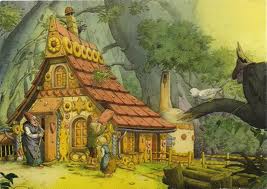For those of you who have been following the #bookaday posts, I’ve been up in the Alps for a week. I’m back and refuelled, and will pick up with the posts and get back to writing. We drove the length of the Grossglockner Pass, which is the highest and one of the most beautiful roads in Europe. Here are a few photos before I write about what hooked me in to reading. It seems fitting that the photos are of Europe, the home of the writers I want to talk about.
I was influenced by so many great authors throughout my childhood. While I enjoyed Enid Blyton, Judy Blume and Noel Streatfeild early on, what hooked me in to reading was primarily fairy tales. I loved Hans Christian Andersen’s The Princess and the Pea and, although I wouldn’t necessarily subscribe to the Happy Ever After endings, there was something magical about the idea of anyone being able to feel a pea beneath layers of mattresses. Children often want to believe the unbelievable, don’t they? Think Peter Pan, The Lion, the Witch and the Wardrobe; or, in my case, The Lochness Monster, the Abominable Snowman and the Tooth Fairy. The first two exist, don’t they? Anything implausible, I believed in it. Such was my hopeless and incorrigible imagination. The thing is children want to believe in unreality, they want a world beyond the real and the plausible. And I think adults sometimes look for the same thing. It’s why we read fiction.
And then there were the Brothers Grimm’s fairy tales: Rapunzel, Hansel and Gretel, Cinderella. I devoured them all, utterly absorbed in another world. Hansel and Gretel grabbed my attention for the suspense as the children become lost in the woods. I liked the idea of a house made of sweets, and was always captivated by images of the roof. I have started to make a European gingerbread house at Christmas, a tradition in Germany which comes from this story.
In Germany, there’s a rhyme that’s said about Gingerbread Houses that comes directly from the story of Hansel and Gretel:
Knusper, knusper, knäuschen,
wer knuspert an meinem Häuschen?
Der Wind, der Wind,
das himmlische Kind.English Translation:
Nibble, nibble, gnaw
Who is nibbling at my little house?
The wind, the wind
The heavenly child.
I’ll also throw in Joseph Jacob’s Jack and the Beanstalk. A giant at the top of a beanstalk? Really? These imaginary worlds are a wonderful escape from the real world and teach children about the far reaches of the imagination. And you are never too old to read them.
Einstein said, “If you want your children to be intelligent, read them fairy tales. If you want them to be more intelligent, read them more fairy tales.” While I am certainly no genius, I find his quote interesting because it suggests a link between the imagination and the intellect. What are your thoughts?






Your post struck a few chords. As a child my father would take us a few times across the Grossglockner Pass, among others. One journey was precarious, when the mist was so thick we drove with our car doors open to gage where the road fell away down the cliffs. Thanks for the lovely photos.
Also, I grew up with the fairy tales of the Grimm Brothers and Anderson. I remember being so impressed by The Princess and the Pea, I got my friends to stage the story, with stacks of mattresses, curtain and all, in my bedroom, and we invited the grown-ups to watch. 🙂
LikeLike
I tried to imagine, in the bright sunshine, what it would be like to drive through mists. The sheer drop away from the edge of the road looked terrifying enough with clear vision, but I can imagine how dangerous the drive would be in low cloud. The road is closed through the winter, and for good reason. I’m glad to find a fellow Pea fan! It is a wonderful story. I can imagine the hilarity of staging a show with piles of mattresses. Thanks for your comments.
LikeLike
My pleasure. Yes, this particular journey was terrifying – a memorable adventure. At the time there were no white lines marking the middle or sides of the road, and hardly any ‘Ausweichen,’ places where you could slip into when the road was too narrow to let an oncoming car pass.
LikeLike
Terrifying. But you live to tell the tale 🙂
LikeLike
Interesting post, FC, thanks. 🙂
Concerning the quote from Einstein: “If you want your children to be intelligent, read them fairy tales. If you want them to be more intelligent, read them more fairy tales.” I find that interesting too…
My understanding of that quote is that opening up a child’s imagination – by reading them fairy tales, in this case – wouldn’t give a child any more intelligence than they already have but rather could help their innate intellect to grow and blossom.
LikeLike
I agree, David. I think the key is in encouraging a child’s imagination. I’m glad you enjoyed the post and I hope your writing is going well. Fiona
LikeLike